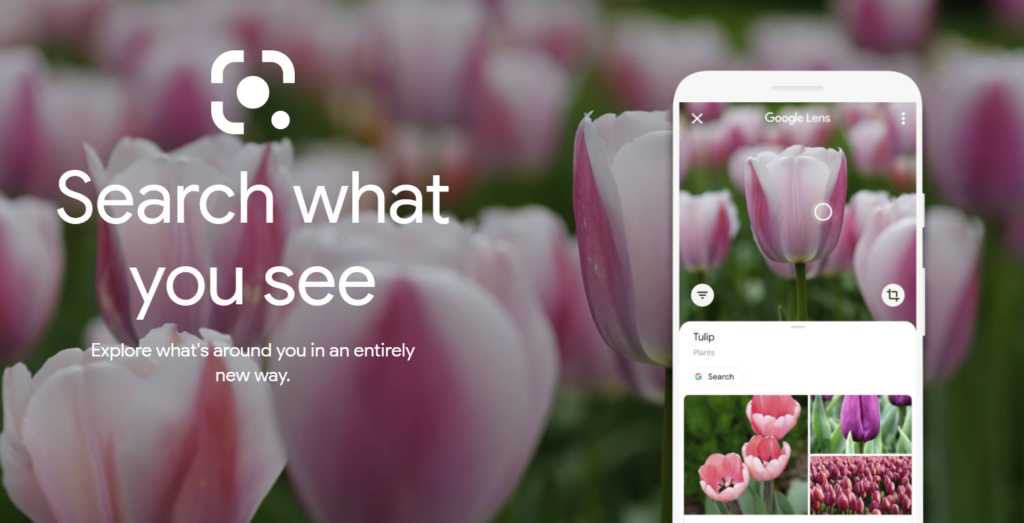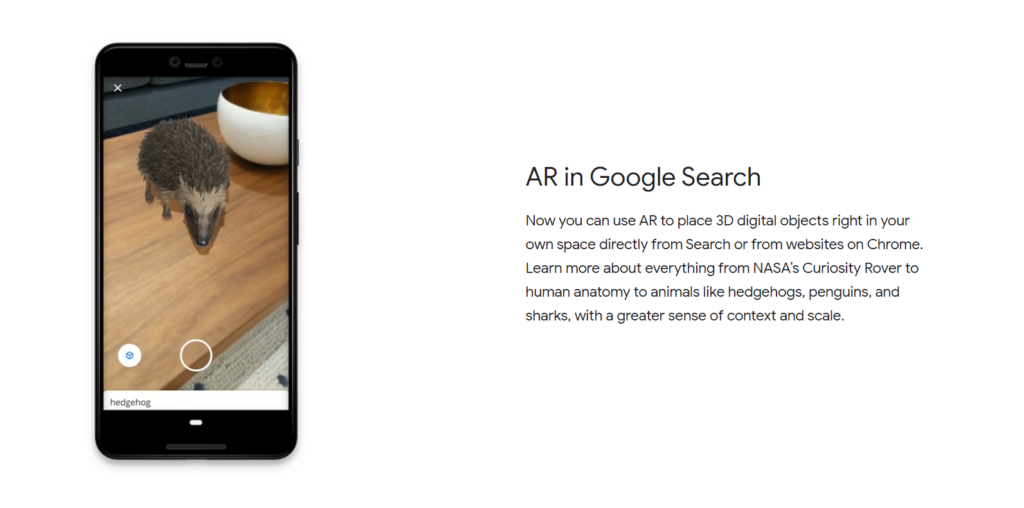
Augmented Reality
This week’s readings were very exciting for me – the idea of augmented reality is not something I’d ever explored and I had a blast learning about it, diving into the examples shared, and thinking about how I could potentially use these as a future teacher.
While I came into this topic wide-eyed and eager to learn, I was not naïve the reality that being able to use these types of tools in a classroom may be a challenge. It was for this reason that I was struck by the simplicity of Google’s AR capabilities.

Personally, I have used Google Lens a few times to identify plants in my garden, but it never struck me that this was a form of AR! Similar to how I’ve used it in the past, I can imagine this being a great tool to use with students to explore, identify, and gather information about things around them (local plants, insects, etc.), perhaps in the form of a guided inquiry.

What really stuck me, though, was Google’s ability to show your google search in a 3D way. In the Android video below, you can see the ability to manipulate and view searched items in detail and at all angles. Even more impressive, it has the ability to place these objects, to scale, in your environment. To be able to make a bison, for example, stand in your classroom to show learners the scale in an environment they’re able to reference is an incredible, almost tangible way to share a part of a lesson like that.
After exploring Google’s AR, it became clear that these types of tools can help meet some of the Principles of Learning.
Effect: Presenting information in a new, exciting way through AR can help create a positive, memorable experience for learners.
Intensity: Creating an intense and exciting learning experience can help with student understanding and appreciation
Freedom: In the example I gave of how Google Lens might be used, this would offer students the freedom to learn while giving them options in their actions and choices while using this tool. (Principles of learning, n.d.)
Inforgaphics
In keeping with the theme of learning about bison, I’ve taken what I’ve learned in the Canva tutorials and applied it to an infographic.

References
Android. (2019, June 27). AR in search: A new way to learn https://www.youtube.com/watch?v=dK7kPiknrBY
Creative Commons Licensed Workshop Curriculum | UVic Libraries Digital Scholarship Commons. (n.d.). Retrieved February 20, 2021, from https://oac.uvic.ca/dsc/workshops/lessonplans/
Principles of learning. (n.d.). Retrieved from https://psychology.wikia.org/wiki/Principles_of_learning
lukejr
31 May 2021 — 9:19 am
AR is funny as you mention that it has been incorporated into some things already, but thinking about it in a learning context is often new for people. Great your working in Canva too!